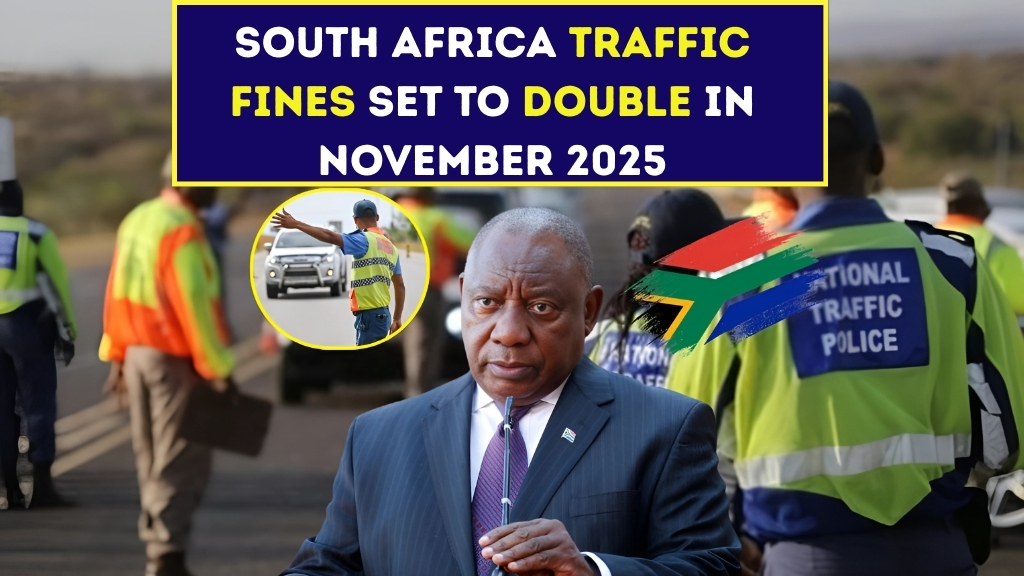Pretoria motorists are about to confront a steep and broadly applicable increase, doubling traffic -generating fines across the entire metropolitan zone, effective November 1, 2025.
The decision, formally endorsed by municipal transportation and law enforcement representatives, is intended to re-establish a credible deterrent against persistent road-rule infractions and enhance collective road safety.
The window for review and adjustment is therefore narrowed to sixty calendar days, and the Council advises all operators of registered motor vehicles to scrutinise the adjusted penalties expeditiously to avert unplanned financial burdens of equal or greater magnitude than small household or commercial expenditure line items.
Disentangling the Revised Sanction Regime
The grid-wide, transactional doubling of fines occurs across the legislative code defining motor vehicle infractions, transmitting a unifying incentive for compliance. The apparel of the penalty substitution—discouragement of complacent behaviour, awakening of deterrent perception to an accumulated status of minor penalty responsiveness—is modelled on loss-calibrated incentive triaging.
The City of Tshwane elucidates the action as a numerically proportioned compartment of a multidimensional road-safety envelope, which incorporates detector upgrades, signal redesign, and socio-educational campaigns, whose prime objective is the empirical lowering of inconsistencies among measured reduced and primary harm incidents.
The definitive codification of each cleverly rounded fine (“telescopic”) amount will emanate from the municipal gazette one week pre-implementation.
however, infringement categories that have the statistically highest deterministic penalty effect and are intended to trigger maximum compliance effect are already showcased. Among them are sustained baseline and inflated-speed infractions, elevated blood alcohol concentration exceedances, primary signal violation, and simultaneous device-activated attentional dispersion.
Identified Offences at the Upper Lim determinados of the New Regime
The enforcement spotlight will, nevertheless, converge upon inattentional handheld device usage, which is anticipated to absorb, by continued jurisprudential expectation and actuarial projection, the maximum financial deterrent magnitude of R5,000.
The regulatory framework demonstrates heightened anxiety within transport authorities regarding the substantial role of inattentive driving in the accident causal chain.
Motorists cannot discount harbor speculation regarding less conspicuous offences that, under the reconfigured penalty regime, now invite remarkably escalated fiscal liability.
An observable decline in tread on any tire incurs a penalty that, in footprint terms, now marks a multiple of the prior fiscal, the rationale being the pronounced decrement in lift and grip during peak braking manoeuvres.
Permits denominated in the windshield still elude many drivers at the commencement of the trip; the penalty for this trivial oversight now draws a commanding fiscal reprisal, thereby neutralising its trivialisation.
The perceived female stop-roll manoeuvre at intersection points now, in textual letter, imports a zero-tolerance ratio; the sanctioned reallocation now forces drivers essentially to re-imagined mat intersection hazards.
Second-Order Effects for Pretoria
The monetary footprint confronting Pretoria constituents dwarfs the past apprehension; a solitary infraction now draws equivalency to the proximate monthly budgetary allocation to grocery cart. The same fiscal and reputational calculus multiplies for any individual whose monthly income derives from a vehicle, pre-calibrated.
Operators within shared transport environments—repeat taxi and app-aggregated drivers—remain singularly exposed, their daily clock margin magnifying the probability of multiple detects.
Land production footprints now refer to price rationalizing models that re-adjust to tight margin, essentially consumers, in theory, may now mathematically account for discernible price allocations.
Counterintuitively, the outcome now lands on bank transfer calculations on consumers rarely travelling in personally held taxis; allied firms will, in their rationalising structure on syntax, redeploy price adjustments policed by fiscal auditors. Cross operators now modify daily OoB and responses.
Preparing for the November Changes
With the November enforcement deadline fast approaching, all drivers operating within Pretoria jurisdiction must adopt measured behaviours to avoid exposure to the revised sanction regime:
Participate in the free public forums and information briefings conducted by relevant traffic departments to gain an authoritative and practical grasp of the amended legislation.
Undertake a comprehensive vehicle safety assessment, focusing particularly on tread depth and pressure, all lights’ functionality, and the currency and display of licensing documents.
Leverage mobile applications offering up-to-the minute traffic advisories, including alerts for statutory driving behaviours.
Critically evaluate driving patterns, especially with respect to habitual infractions such as failing to come to a full stop at designated intersections and the unlawful use of mobile devices.
Although the adjustments substantially increase monetary penalties, the underlying purpose—maximising general roadway safety—serves the wider public interest.
By informing themselves of the revised structure of fines and by methodically modifying risky behaviours, motorists can prudently escape excess expenditure while simultaneously advancing the objective of lower crash rates on Pretoria’s thoroughfares.
